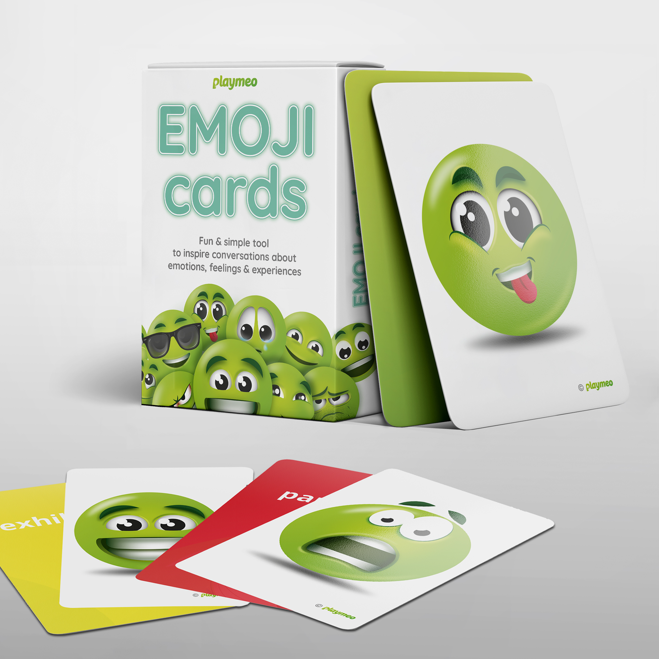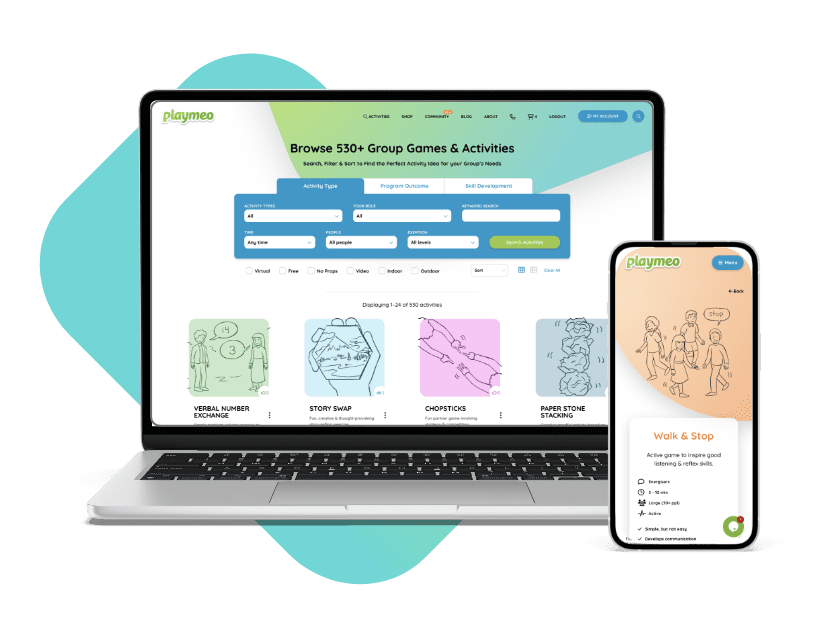Download our free 28-page ebook jam-packed with outrageously fun activity ideas.
Have you noticed that most icebreakers seem to be designed for large groups, ie groups of 20 or more people? In this post, you will learn five of the best icebreaker games for small groups, i.e., groups of 10 or fewer people.
How Big is a Small Group?
Group size is relative, of course. What is considered large for me may be quite small for you, and vice versa.
For instance, I used to run a summer camp in the United States that regularly had more than 800 campers involved in the same activity simultaneously. Now, this is large by most people’s estimation. Yet, I have also worked in some really remote schools in central Australia that boasted as few as three or four students in a class, but across the hallway, there could be as many as ten students, and this class was described as large.
For the basis of this post, I suggest that ten or fewer people are a small group. Feel free to reinterpret “small” as whatever works for you.
Either way, every icebreaker game I describe here will work with two, three, or up to 10 people.
Icebreaker Games for Less than Ten People
Groups of ten or fewer people tend to lack the energy to make certain group games and activities work. Yet what they lack in energy, they certainly make up for in potential intimacy.
And when it comes to icebreakers, you can never have too much intimacy or vulnerability.
As a starting point, click the button below to search for icebreaker games suitable for groups of 3 to 8 people (a particular search attribute of playmeo’s powerful search engine.)
Already, you’ll discover there are at least 40+ wonderful ideas.
Here are my top five favourite icebreaker games for small groups, in no particular order.
Be sure to click the links to view their FREE simple step-by-step instructions.
1. UBUNTU Cards
It is possible this activity would feature in any program no matter how many people were in it. I just love UBUNTU cards because, well, they are the perfect tool for inviting people to interact, find something in common with others and have fun. There is no shortage of activities you can use these cards to break the ice with small groups, from highly interactive sharing-type activities to more passive self-reflection-type exercises. If you don’t have a deck of these cards as a part of your repertoire, now’s the time to fix that problem – click here to buy UBUNTU Cards today.
2. Icebreaker Question Exchange
This exercise inspired the concept behind the development of the popular We Connect Cards. In advance, prepare a bunch of cards with interesting questions on them. Either invite the whole group to respond to each question or equip each person with a card and invite them to interact with a series of partners over several minutes. For small groups, my suggestion is that at any time a pair encounter a question one of both of the partners has answered before, invite them to pull anew card (question) from the bigger pile.
3. ID Numbers
All you need is some index cards and a few pens. Guided by your example, everyone creates their own unique set of identity numbers. Then, you invite your group to interact with others to try to guess what each number means. I have never seen this game fail to trigger lots of laughter and surprise discoveries. And the best part of this icebreaker game is that it is fuelled by choice – no one will ever share anything about themselves that they do not want others to know.
4. Kram Dralloc
Okay, this one is intimately connected to me (read the letters backwards) but, once again, I have never seen it fail to generate laughter, energy and lots of positive get-to-know-you vibes. Form pairs or dive in with everyone involved at the same time, it won’t matter. Kram Dralloc will inspire lots of creativity and, often, collaboration when some members of the group need some help identifying where they are from or, indeed, how to say their name. Endlessly curious.
5. Care About
This exercise was inspired by the dark old days of COVID and dozens of virtual meetings. For the first time, we had the brief privilege of peering into the personal worlds of our students, colleagues, and team members through the backgrounds of their videos. We could learn a little about our online participants by simply looking over their shoulders. The exercise was simple – I would ask everyone to grab something (anything) within reach of where they were standing/sitting that resonated with them. A book, an ornament, a photo, whatever. It could evoke a special memory or remind them of an experience or a person, etc, etc. The magic was found not in the object, but in the sharing of the story connected to it. As simple and as powerful as that. And the best part is, you don’t need a virtual audience to make this work.

Unlock playmeo FREE for 7 Days
Never be short of activity ideas again. Sign-up today. Upgrade or cancel at any time.
Free Icebreaker Game Instructions
Remember, you can view all of the step-by-step instructions for these five icebreakers for small groups, PLUS 525+ other activities right here, right now.
Click the button below to get started.













Original post March 2024, last updated March 2024.